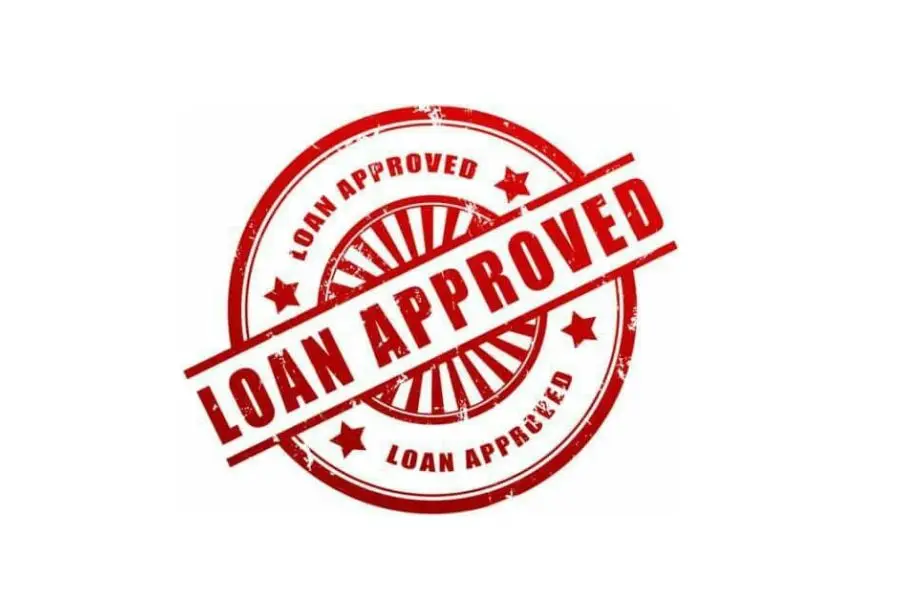“How to Apply for a Personal Loan Guide : A personal loan can assist you meet effectively your all financial needs like consolidating debts, purchasing an expensive thing, covering emergencies or renovating your house. However applying for such a loan might be daunting if you do not know what is involved in it? This comprehensive guide explains everything about applying for a personal loan – from assessing personal circumstance in which one finds themselves and checking one’s credit rating, through finding suitable lender, then finally managing loan properly.
With these detailed instructions, anybody would be able to apply for a private loan confidently; hence they get the best possible conditions that meet their individual finances requirements
“How to Apply for a Personal Loan Guide: Step-by-Step Guide”Today we will tell you
Why Apply for a Personal Loan?
Personal loans can be used for various purposes, such as consolidating debt, financing a large purchase, covering emergency expenses, or funding a home improvement project. Understanding why you need the loan and how it will benefit your financial situation is crucial before starting the application process.
Benefits of Personal Loans
- Flexibility: Personal loans can be used for almost any purpose.
- Fixed Interest Rates: Most personal loans come with fixed interest rates, making it easier to budget for monthly payments.
- No Collateral Required: Unlike secured loans, personal loans are typically unsecured, meaning you don’t need to put up any assets as collateral.

Step 1: Evaluate Your Financial Condition
People should first have an insight of their financial status before going for a personal loan. You need to know the amount of money you want and find out if getting a loan is appropriate for you.
Key Considerations:
- Purpose of the Loan: Define why you need the loan.
- Amount Needed: Calculate the exact amount you need to borrow.
- Repayment Plan: Ensure you can afford the monthly payments without straining your finances
Step 2: Check Your Credit Score
Before applying for a personal loan, it’s crucial to check your credit score, as it significantly impacts your loan application. Your credit score helps lenders assess your creditworthiness and determines the interest rates and terms you may be offered. Here’s how you can check your credit score and understand its implications:
Why You Should Care About Your Credit Score
How to check up on your credit score
First off, it walks you through all the processes of obtaining your free credit report.
Get a hold of all the three Credit Reporting Agencies, namely: Equifax, TransUnion and Experian. To this end, Little knowledge tells that you are entitled to one free copy every year from each of the bureaus. Meanwhile, visit AnnualCreditReport.com when making the request for your credit report

Then again, use these services to monitor your credit. Apart from that, there are mobile applications too as this provides real time records of any changes in your scores thus alerting you at once. For those people who are not ready to pay for them yet may enjoy their free versions offered.
Your credit score can also be checked with some banks and a credit card company. Log into your online banking portal or look at the back of your statements
APPLY GET A PERSONAL LOAN WITH A HASSLE FREE DIGITAL PROCESS , IN JUST 10 MINUTES
A Little Bit about Credit Scores
Excellent (750+): A score in this range generally qualifies you for the best interest rates and loan terms.
Good (700-749): A good score increases your chances of approval and can help you secure favorable terms.
Fair (650-699): A fair score may still qualify you for a loan, but you may face higher interest rates and less favorable terms.
Poor (600-649): A poor score may limit your options, and you may be offered higher interest rates or less favorable loan terms.
Cut Down on Credit Card Debt: Decreasing the amount owed on your credit cards will reduce your utilization ratio thereby boosting your rating positively.
Do Not Open New Credit Accounts: Opening multiple new credit accounts within a short duration adversely affects one’s credit score.
Look for Mistakes: Always check once in a while at least every month though upon request with the credit bureaus if there are any discrepancies in records about your credit report so as to raise disputes against inaccuracies if any arise with them.
Step 3: Research Lenders
That’s an important task you need to do when applying for any personal loan. You should research your options thoroughly in order to choose a lender who will meet your financial needs since their terms, interest rates, and fees are different. This article provides tips on how to carry out effective research and pick an ideal lender:

Categories of Moneylenders
Traditional banks provide personal loans with reasonable prices, especially if one has a sound rapport with them.
Credit unions usually present lower interest rates and more adaptable conditions than banks do.
It is imperative that you consider the convenience as well as speediness of applying for loans when deciding who to deal with.
What to Compare
- Interest Rates: Compare the annual percentage rate (APR) offered by different lenders.
- Loan Terms: Look at the length of the loan and the monthly payment amount.
- Fees: Check for any origination fees, prepayment penalties, or late fees.
Step 4: Prequalify with Multiple Lenders
In order for people to know which one is the most suitable personal loan for them, they need to prequalify with several lenders first. You may also find different loans offers that won’t influence your credit history by prequalifying. Here are some ways to do it successfully with a number of loaners:
Benefits of Prequalification
- No Impact on Credit Score: Prequalification does not involve a hard credit inquiry.
- Multiple Offers: Allows you to compare offers from different lenders.
- Better Decision Making: Helps you choose the best loan terms based on your financial situation.
Step 5: Gather Required Documentation
There is no greater feeling than being on your own when it comes to applying for personal loans. If only you take some time to collect these documents, everything will run smoothly and you might even get approved easy peasy. Here are some of the most common documents that virtually all lenders want
Mostly Needed Papers
identity confirmation: Driver’s license, passport or state issued identification.
Income verification: Pay check stubs; tax returns or bank records can serve this purpose.
Physical address evidence: Utility bills may take as reference alongside a lease agreement or mortgage letter.
Economic statements could include a checking account record alongside investment portfolio documents while others serve as asset proof pilots
Step 6: Complete the Application
Application of loan is the key step in gaining the loan needed. You have to provide thorough details about yourself, including your finances and the type of loan you require. To aid in making this process easier for you, here is a step-by-step guide

Information Required
- About Yourself: Name, place of residence, social security number and other means of communication.
- Regarding Work: Name of employer, title held, how long you have been working there and how much it pays
- Loan Particulars: The amount you want and why you require i
Step 7: Submit Documentation
You must submit your papers as it is very essential in applying for personal loan. This guarantees the lender has all the details needed to process and approve your loan. Here is a direction that will assist you in submitting your documents effectively:
Take into account that before submitting any documents, you need to ensure that they meet the requirements set by your lender. Some of these documents may include but are not limited to: identification proof, income reports, work contracts (if applicable), residence records, balance sheets and documents disclosing debts.

Deciding how to submit:
• Online – The safest and most convenient way of doing things is by using the lender’s online portal for uploading these documents.
• In Person – The second option would be taking hard copies straight to the lenders’ offices where loan officers are available to help you sort out everything.
• Email/Fax – If so allowed, submit them using either email addresses or fax numbers given, indicating that they should be sent through prudential modes to escape data theft.
Labeling your documents: Label all files properly and let them have suitable classifications. Make sure they can be read and are presented in formats that suit lenders, say pdf or jpg.
Confirm receipt – After you’ve sent your files via any of means discussed ensure you ask confirmation from your lender regarding their arrival documentaries. If after some time passes and there is still no feedback definitely check on them again
Step 8: Wait for Approval
After you’ve submitted your application, the lender will review your information. Depending on the lender, this can take anywhere from a few hours to a few weeks.

During the Review Process
Additional Information: The lender may reach out to you for more information or clarification.
Credit Check: The lender will do a hard credit inquiry to determine how creditworthy you are.
Underwriting: The lender’s underwriting team evaluates your financial circumstances and whether or not you can repay the loan.
Step 9: Review the Loan Offer
Before accepting a loan offer from a lender, it is important to carefully scrutinize it. This step guarantees that you understand the terms and conditions completely and that it meets your financial requirements. Here are some ways to effectively review your loan offer:
Key Elements to Consider Examine what kind of interest rate is Being charged It can either be fixed or variable – find out exactly what kind applies to you Loan Term Repayment period Interest that needs to be paid on both principal and interest on borrowed amounts The number of months where repayments are made every month Hypothetical figures which start at 100$ Minimum monthly payment -0985%21 in one year for instance from 500 US$ These costs may include origination fees prepayment penalties etc
Step 10: Sign the Loan Agreement
Read the Agreement Carefully
Review Terms: Ensure that each term discussed during the negotiations is reflected in the agreement accurately such as the interest rate, loan amount, repayment schedule and other charges.
Understand Obligations: Make sure you understand your obligations including payment dates and amounts.
Verify Personal Information
Check Details: Verify whether your name or address is correct.
Sign the Agreement

Electronic Signing: If applying online you can electronically sign via lender’s portal.
In-Person Signing: For those who applied in person they must physically sign documents at lender office.
Keep a Copy
Save Documents; A signed agreement should be retained for your records. This will be helpful for entire duration of loan term.
Submit Required Documents
Additional Documents: Submit any additional documents required during loan process promptly.
Step 11: Receive Funds
After signing the loan agreement, the last step becomes obtaining your funds. The following things will likely happen
Processing Time
Check Timeline: Depending on the lender the time that you are required to wait for your cash can differ a lot between hours and days.
Confirm Expected Date: It is important to ask your creditor about when to expect your funds in order to prepare in advance.
Fund Disbursement Methods

Direct Deposit: Most lenders deposit directly in the bank accounts of their customers. Make sure that what you gave is 100 percent correct.
Check: your lender can give you a check as well as ask you to cash it or put it in your account.
Verify Receipt
Check Account: As soon as they tell you have received it go check if it is really there.
Review Amount: Ensure that the amount received equals what was offered before applying for the loan.
Use Funds Appropriately
Follow Purpose: Make sure that the funds are being used for their intended purpose like debt consolidation or home improvement amongst others.
Track Sp308-nding: Monitor how you spend so these tend to get along with your budget and financial plans
Step 12: Manage Your Loan Responsibly
Managing your credit is critical in ensuring fiscal soundness and prompt payment. Here’s how to manage your loan sensibly:
Make Timely Payments
Set Up Reminders: Like calendar alerts or automatic payments and this implies you have got no due date missed.
Understand Due Dates: It is important to know your payment schedule know the amounts as this helps in avoiding late fees and potential damage to credit score.
Budget for Payments

Include in Budget: You need to make sure that you incorporate loan payments when creating your monthly budget so you are not short of liquid cash.
Adjust as Needed: When there are changes taking place in your financial status, make sure that you change your budget so that it can accommodate loans repayments.
Monitor Your Loan Balance
Track Progress: Regularly check your loan balance and payment history to ensure everything is okay.
Review Statements: It is essential to double-check monthly statements for any inaccuracies. In case they are found out; the lender must be informed immediately.
Communicate with Your Lender
Report Issues: If you experience any financial hardship, reach out to your lender about modifying loans or deferring them temporarily.
Stay Informed: Constantly communicate with lenders about your loans and modifying terms and conditions at times if need arises.
Consider Extra Payments
Pay Early: In case you can, pay off promptly more towards principal than its usual amount to minimize total interest paid as well as shorten period of loan.
Check for Penalties: Ensure there are no prepayment penalties before making additional payments.
Additional Resources
- Read More: Best Savings Accounts for Students in 2024
- Read More: best Pet Insurance Policies In India 2024
FAQ
What is a personal loan?
A personal loan is a type of unsecured loan that you can use for various purposes, such as consolidating debt, funding a large purchase, or covering emergency expenses. Unlike secured loans, personal loans do not require collateral.
How do personal loans work?
Personal loans are a type of loan that gives you a huge sum of money and it’s up to you to pay it back within certain specified time frame with set monthly installments. Most lenders charge fixed interest rates so your payments remain the same for the entire loan period.
Can I apply for a personal loan with bad credit?
Yes, you can apply for a personal loan with bad credit, but you may face higher interest rates and less favorable terms. Some lenders specialize in loans for borrowers with poor credit or offer secured loans as an alternative.
What is the difference between a personal loan and a credit card?
Personal loans provide a lump sum of money with fixed payments and interest rates, while credit cards offer revolving credit with variable interest rates and minimum monthly payments. Personal loans are often used for larger expenses, while credit cards are used for ongoing or smaller expenses.
u003cstrongu003eHow can I apply for a personal loanu003c/strongu003e
To apply for a personal loan, choose a lender, gather the required documentation, complete the application form, and submit it along with any necessary documents. Some lenders offer online applications for convenience.
u003cstrongu003eCan I pay off my personal loan early?u003c/strongu003e
Most personal loans allow for early repayment, but some may have prepayment penalties. Check your loan agreement to understand any potential fees or restrictions related to early repayment.
Are there any fees associated with personal loans?
Indeed, individual borrowing might come with different charges like initiation expenses, penalties for early payoffs, and overdue payments fines. Ensure that the borrowing contract is thoroughly examined prior making a decision on an invitation.
u003cstrongu003eWhat should I do if I can’t make my loan payments?u003c/strongu003e
If you’re unable to make your loan payments, contact your lender as soon as possible to discuss your options. Many lenders offer hardship programs or alternative payment arrangements to help you manage your payments.
Can I use a personal loan for any purpose?
Absolutely! Personal loans are fully flexible and offer different options including; paying debts, renovating houses, paying medical bills et cetera. It is essential however to know that they are more acceptable to some financial institutions still restricting utilization of these funds.
What are the typical interest rates for personal loans?
Typically, personal loans have interest rates ranging from 5% to 36%. Interest rates depend on credit score, lender and also the selected repayment period among others. Those having excellent credit scores are entitled to lower interest rates than others.
How long does it take to get approved for a personal loan?
Approval times can vary depending on the lender and your application. Some lenders offer instant approval, while others may take a few days to a few weeks to process and approve your application
u003cstrongu003eWhat are the eligibility requirements for a personal loan?u003c/strongu003e
Eligibility requirements vary by lender but generally include a good credit score, a stable income, and a low debt-to-income ratio. Some lenders may also consider your credit history and current financial situation.
Braj Verma is a resident of Rajgarh in Madhya Pradesh and is a content writer and freelancer by profession. He has a degree in Political Science from Barkatullah University, Bhopal. He has expertise in subjects like credit cards, banking, loan, insurance, political analysis and digital marketing.

